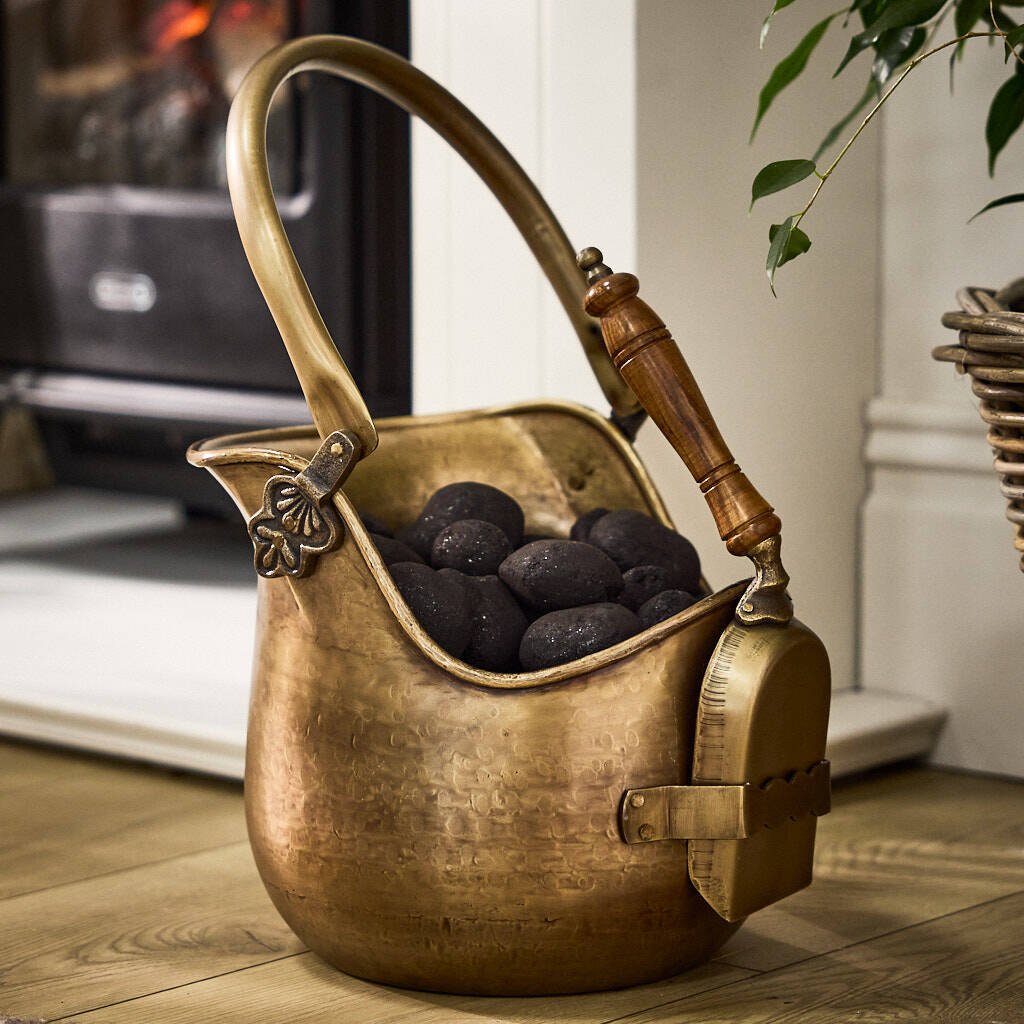The Forgotten Household Object That Once Sat Beside Every Hearth
If you’ve ever wandered through an antique shop and spotted a curious metal container with a wide mouth and sturdy handle, you might have paused and wondered, “What was this used for?” At first glance, it looks familiar enough to stir a memory, yet distant enough to feel mysterious. Back in the old days, this object sat quietly in the warmest corners of the home—near the crackling fire, beside the old brick hearth, or tucked next to a coal-burning stove. Today, many people walk right past it without recognizing its purpose.
Let’s step into the past and rediscover a tool that once played a vital role in everyday life.
A Quiet Icon of the Hearth: What Was This Object?
Before modern heating systems existed, families relied on coal and wood to keep their homes warm. The item in the picture is known as a coal scuttle or ash bucket, and it was as essential as the fire itself. You could find one in nearly every home from the late 1700s to the mid-1900s. While simple in appearance, it was designed with intention and practicality, shaped by the needs of hearth-centered living.

This wasn’t just a container—it was a symbol of comfort, warmth, and the steady rhythm of a slower era. Every winter evening, someone in the house would carry this very bucket to fill the stove or clean out the ashes, keeping the heart of the home glowing.
A Design Built for Fire and Function
The coal scuttle might look rugged, worn, and heavy, but its design was far smarter than it appears.
Its body was made from durable iron or galvanized steel, materials chosen to withstand intense heat without warping.
The wide, flared opening allowed users to scoop coal easily or pour out ashes without making a mess.
Vertical ridges along the sides added structural strength and prevented the metal from buckling over time.
A large handle at the top made it easy to carry from the coal shed to the fireplace.
A secondary side handle let the user tip the bucket smoothly, ensuring the coal flowed gently or the ashes poured cleanly.
The broad, stable base kept it from tipping, even on uneven floors.
This object was built to be practical, tough, and reliable—the kind of item that aged alongside the family that used it.
Video : Victorian Coal Scuttle And Ash Bin Restoration
The Daily Ritual of Firekeeping
In many homes, tending the fire wasn’t just a task—it was a ritual. The coal scuttle played a central role in that ritual. Before dawn, someone would scoop fresh coal into the fireplace or stove, coaxing new flames to life. After the fire burned down, the same bucket collected glowing embers and hot ash, keeping the hearth tidy.
It kept dust from drifting across wooden floors, prevented smoldering fragments from causing danger, and made fire maintenance safe and efficient. Without it, the fireplace would have been far messier—and far more hazardous.
This humble metal bucket made the difference between a warm home and a smoky, ash-covered room.
A Tool of an Era Before Central Heating
From Europe to America, coal scuttles were everywhere. They lived in English cottages, French farmhouses, German manors, and American Victorian homes. Whether in a grand parlor or a modest kitchen, you’d find the same trusty metal bucket waiting patiently beside the fire.
Their peak popularity stretched from the late 18th century through the first half of the 20th century, when coal and wood were the primary sources of heat. But with the arrival of central heating systems, radiators, and electric furnaces, the coal scuttle slowly disappeared from modern homes.
By the mid-1900s, it was no longer a necessity. Instead, it became a relic—still functional, still durable, but no longer essential.

Where You’ll Still Find Them Today
Although they’ve vanished from everyday use, coal scuttles haven’t disappeared completely. Today, they live on in:
Old farmhouses
Vintage-themed interiors
Rustic décor collections
Historic homes and museums
Antique markets
Cottages with working fireplaces
Many people now use them decoratively—turning them into plant holders, umbrella stands, or rustic storage pieces. Even in retirement, they add charm and character to a room.
Their weathered metal and timeless lines capture a sense of history, grounding modern spaces with a touch of authenticity.
A Nostalgic Reminder of Slower, Warmer Days
There’s something deeply comforting about objects like this—items that witnessed generations of family life. They were part of cold mornings, bustling kitchens, and quiet evenings by the fire. When you look at a coal scuttle today, you’re not just looking at a piece of metal. You’re looking at the echoes of winter nights, the glow of burning embers, the stories shared beside the hearth.
It reminds us of a world where warmth wasn’t controlled with a switch, but earned through effort and ritual.
Video : The Traditional Coal Bucket Explained
Conclusion
The old metal bucket you see in the image isn’t just a forgotten tool—it’s a piece of living history. Once essential in homes across the world, the coal scuttle served as the silent partner to every fireplace, ensuring the home stayed warm, safe, and clean. Though no longer needed for its original purpose, it continues to carry the memory of a time defined by craftsmanship, patience, and the comforting glow of a well-tended fire.
Today, it stands as a humble reminder of what home once meant: a place built around warmth, tradition, and the simple beauty of everyday tasks.